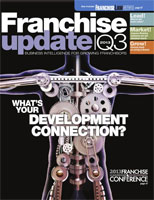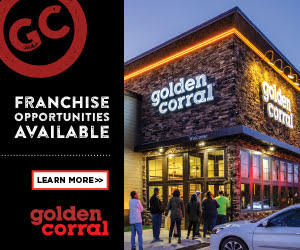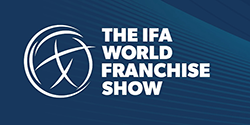Tactical or Strategic?: How Does Your HR Person Think?
How many strategic initiatives has HR brought to the "C level" in the past 12 months? Your answer to this question tells us if you have a tactical or a strategic thinking HR person. Perhaps the more important question is, what type of HR person does the position require? A strategist can think and handle tactical application, whereas a tactician really struggles with strategic thinking. If your company has one HR person, it is better for that person to think big picture.
That person also should report directly to the CEO and, in my opinion, be part of the executive team. Given the expense associated with people, the impact this position has on your clients, and the need for continuous improvement, HR should not be the responsibility of a person lower on the food chain. When it comes to human capital, the following are a few that fall within the purview of HR and are both tactical and strategic. The following lists delineate the responsibilities and actionable items for each.
5 tactical applications
1) Position benchmarking. Do we understand the skills, education, experience, and personality required for all positions? We have a job description, but we also need to know the requirements of the position. A brief example is franchisee selection. We look at an applicant's finances, but not necessarily at their results orientation based on their personality. This is perhaps the most critical aspect of one's personality.
2) Selection (job-fit analysis) for all positions. Simply stated, this is the comparison of the individual's personality compared against the requirements of the position. In essence, we measure what each seat on the bus requires and compare that against the behavioral attributes of the incumbent or the applicant. Are they the right person for that seat?
3) In-depth training for all positions. People learn differently based on their personality. We just hired two new sales people for slightly different roles. Because of the nuances of their personalities, we've crafted a different training program for each.
4) Bench strength assessment. It is essential to survey the personality of every employee to identify potential future leader and possibly fast-track them. If we don't, they will still become leaders, they will just do it somewhere else.
5) Training and development for all employees. If we train our people, the worst thing that will happen is they will leave. If we don't train them, the worst thing that will happen is they will stay.
5 strategic applications
1) Succession planning. Part of any business plan is an exit strategy. Whether our exit strategy is an ESOP or outright sale, ask yourself the following questions: How many direct reports do you have? How many think and behave strategically? If your direct reports submitted their resignations tomorrow, based only on their performance would you accept or fight to keep them? If you were going to start an identical company 5 miles away and could take as many of your direct reports with you, how many would you take? When you go home, how many days a week are you emotionally tired?
Your answers to these questions tell you the state of your executive team and your own health. When we don't have the right people in the right seats on the bus, the onus of responsibility falls back onto our shoulders; and we worry about or are handling the things our team stinks at. That is why we are so tired every day. We always know who we have issues with; we rarely understand why the issues exist, what to do about them, or how to fix them.
2) Leadership development though 360° feedback. We spend our lives attempting to master the gaps that exist between who we are and the requirements of our position. The benefit of a 360° review process is that it is focused on the gap or differences between your perception of your performance and the perception of your manager, peers, and direct reports. (To see what your own gaps are, email [email protected] with the word "GAP" in the subject line and we will send you a survey.)
3) Self-development action planning and accountability. For every behavioral strength there is a corresponding and diametrically opposed challenge. The more and better we understand each, the easier it is for us to mitigate our edge, or improve our attention to detail, etc.
4) Employee engagement surveys. Whatever you measure you can better manage. Employee engagement surveys allow us to measure our level of employee engagement or organizational dysfunction. Engaged employees represent our brand phenomenally well, whereas disengaged employees cost us clients and create aggravation and challenges throughout the organization.
5) Organizational development feedback and analysis. This is where it all comes together. This is the granddaddy of planning. Imagine taking graphs that represent each position and incumbent in your organization, placing them on the wall like an org chart, and looking for areas of strength or dysfunction. It is the blending of the behavioral requirements of each position, the personalities of each employee, their 360° results, and an employee engagement survey. This clearly and objectively defines our A, B, and C players and provides an action plan on how to take the company from the proverbial good to great.
It's impossible to have a great company with mediocre people. But with your adoption of the right systems, concepts, ideas, techniques, and technologies you can grow your company to greatness. Oh yeah--the entire concept of a strategic HR person. If they don't drive these strategic initiatives, who will?
Bill Wagner is CEO and co-founder of Accord Management Systems in Westlake Village, Calif. The firm works with franchisors and other franchising professionals to get the people side of the business right through behavioral assessments. Contact him at 805-230-2100 or [email protected].
Share this Feature
Recommended Reading:
FRANCHISE TOPICS
- Multi-Unit Franchising
- Get Started in Franchising
- Franchise Growth
- Franchise Operations
- Open New Units
- Franchise Leadership
- Franchise Marketing
- Technology
- Franchise Law
- Franchise Awards
- Franchise Rankings
- Franchise Trends
- Franchise Development
- Featured Franchise Stories
FEATURED IN

Franchise Update Magazine: Issue 3, 2013








 The franchise listed above are not related to or endorsed by Franchise Update or Franchise Update Media Group. We are not engaged in, supporting, or endorsing any specific franchise, business opportunity, company or individual. No statement in this site is to be construed as a recommendation. We encourage prospective franchise buyers to perform extensive due diligence when considering a franchise opportunity.
The franchise listed above are not related to or endorsed by Franchise Update or Franchise Update Media Group. We are not engaged in, supporting, or endorsing any specific franchise, business opportunity, company or individual. No statement in this site is to be construed as a recommendation. We encourage prospective franchise buyers to perform extensive due diligence when considering a franchise opportunity.